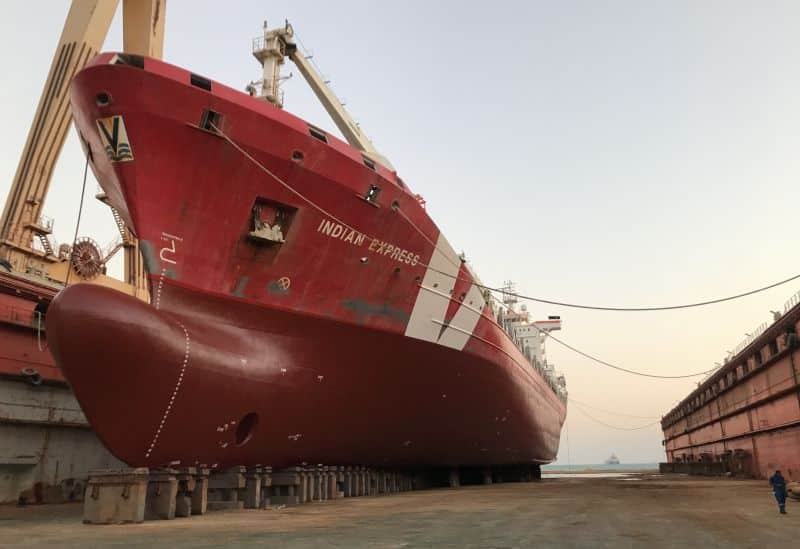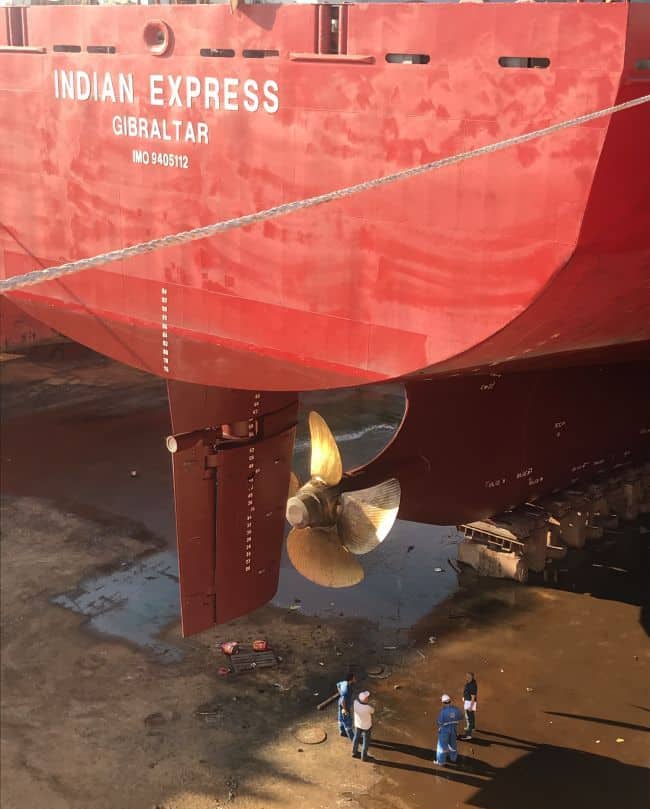
[ad_1]

A recent retrofit to optimize a container ship’s propeller blade design has brought performance and fuel efficiency gains that are measurable in real-world conditions.
Leading ship operator and manager Vroon recently approached Berg Propulsion to investigate the possibility of optimizing the propulsion system on its container vessel, MV Indian Express, fitted with a controllable pitch propeller originally manufactured by ZF. The aim was to secure the sustainability benefits available through greater ship efficiency, as part of Vroon’s continuing strategy to find the best practical answers to lowering CO2 emissions, ahead of the IMO’s Energy Efficiency Ship Index (EEXI) and Carbon Intensity Indicator (CII).
Defining the vessel’s operation profile
David Sakandelidze, Berg Propulsion Business Manager – Energy and Efficiency, explained the process which established Vroon’s requirements.

Image Credits: Berg Propulsion
“In close cooperation with the ship owner and ship operator, we analyzed the vessel’s current and future operation needs and defined its operation profile,” he said. “Next, the performance of the original propeller blades was benchmarked against the vessel’s defined operation profile.”
From here, Berg Propulsion’s advanced simulation tools were used to develop a new propeller geometry, which modelling showed would achieve remarkably superior performance the new operation profile anticipated for the ship. In line with these findings, Berg Propulsion designed blades tailored for the operation, improving efficiency significantly, according to Sakandelidze.
“Efficiency gains are made for much of the time and, at 12 knots, the new blades achieve up to 50% higher efficiency than the ones they replace,” he said.
With performance improved at the speeds most commonly required during operations, Indian Express would achieve an astonishing 22% fuel saving overall, as well as lower emissions that should go farther than the requirements of the IMO’s carbon Intensity Initiative goals for 2026.

Image Credits: Berg Propulsion
Focus on energy and efficiency
“We have recently put a new focus on CII and EEXI and supporting customers to improve and optimize vessels already in operation,” said Jonas Nyberg, Managing Director West for Berg Propulsion. “We are excited to partner our customers, and to help them become more efficient while reducing their environmental footprint.”
Berg’s focus targets hydrodynamic upgrades such as blade optimization, control system upgrades such as installing an engine pitch and rpm optimization system, Dynamic Drives, and electrical upgrades to run shaft alternators with variable frequency coupled with energy storage, said Nyberg.
Press Release
Retrofit With Optimized Propeller Blade Design Cuts CO2 Emissions And Saves 22% Fuel appeared first on Marine Insight – The Maritime Industry Guide
[ad_2]
This article has been posted as is from Source